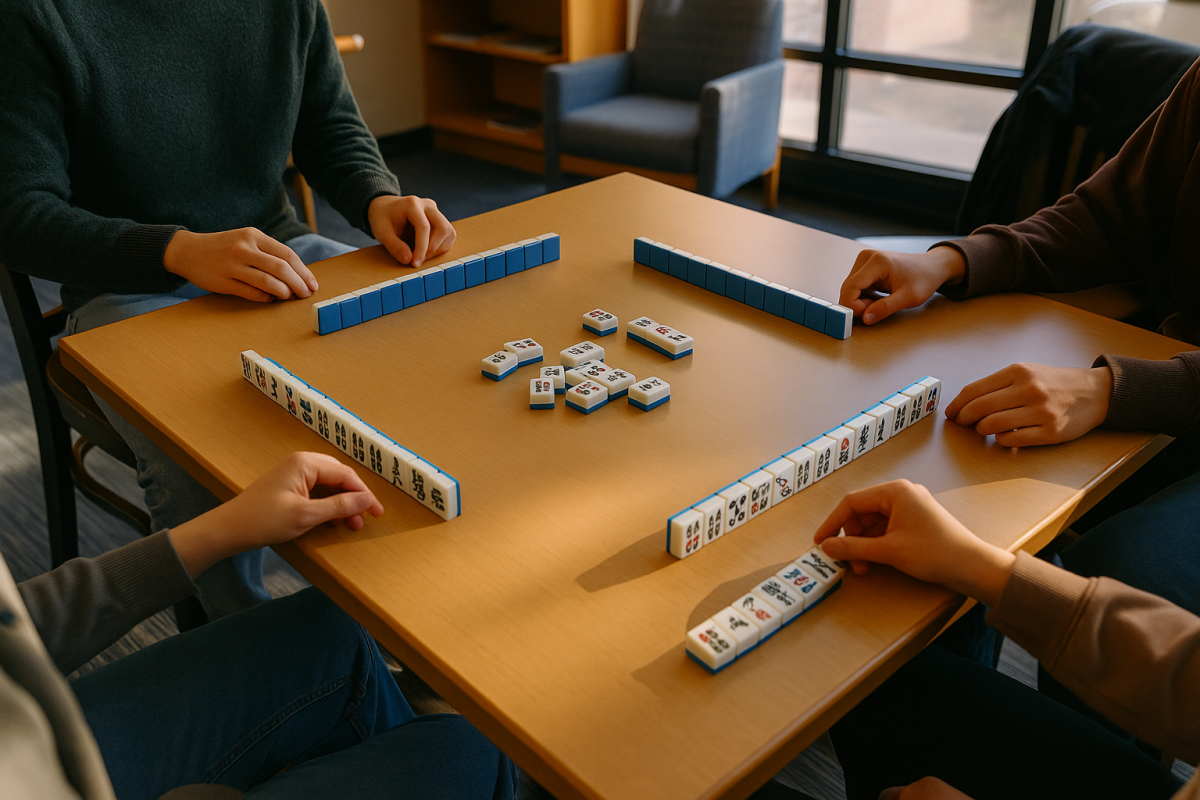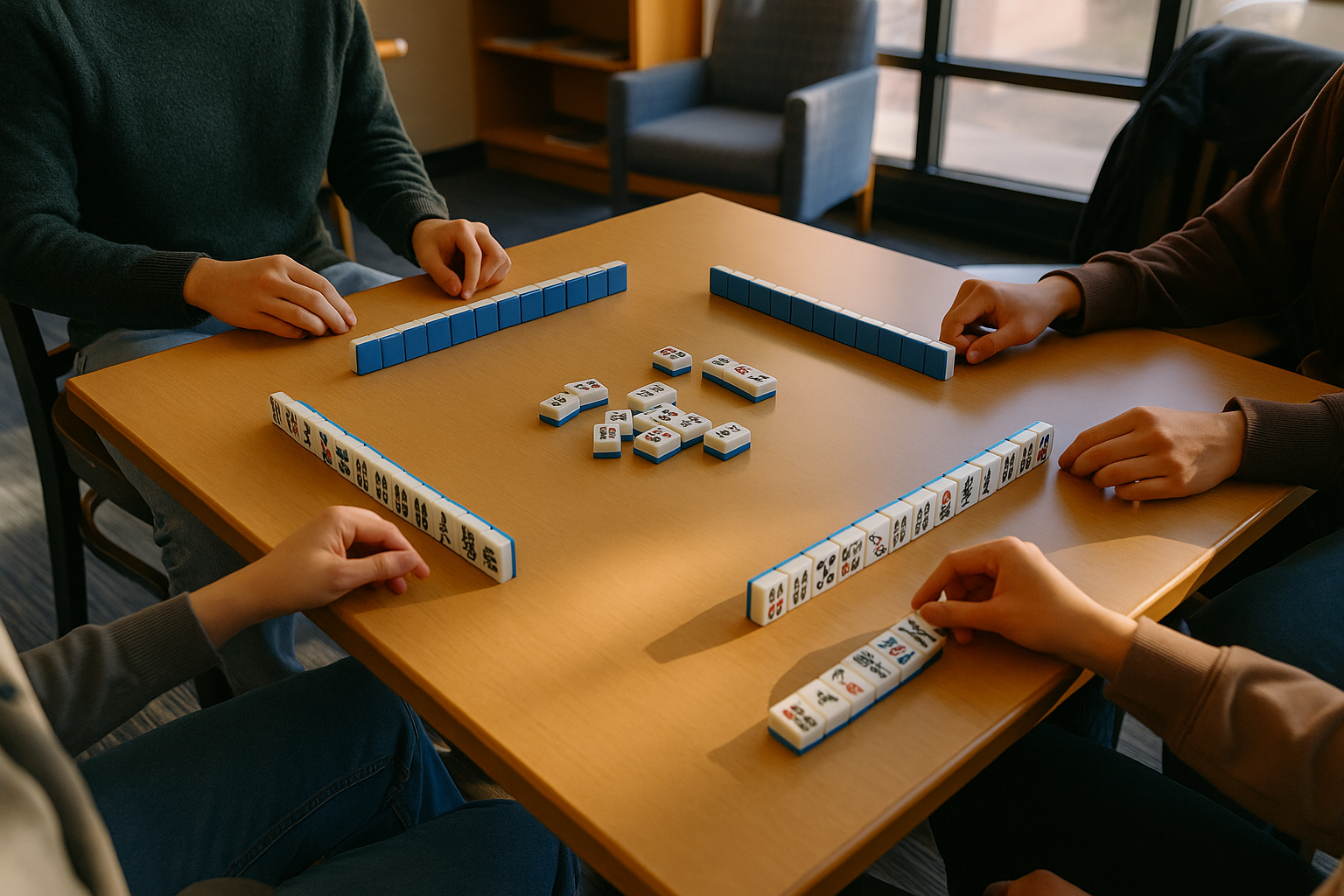
Mahjong’s journey from 19th-century China to modern therapy rooms shows how a game can become a practical tool for mental health. Dementia care programs and memory clinics now use it to improve focus, memory, and decision-making in ways that passive activities cannot match. The rules and pace engage several mental skills simultaneously, making the game both stimulating and familiar. This combination is central to its therapeutic value, and understanding it can help younger players see how a traditional game still has real benefits today.
Why Mahjong Works for the Brain
Mahjong challenges players to recognize patterns, remember past moves, and adapt to new tiles while interacting with others. These actions require the brain to coordinate visual recognition, working memory, and strategic thinking simultaneously. Research shows that activities combining this kind of mental effort with social contact can slow cognitive decline.
Benefits of playing are practically inevitable, but players experience them most when the game demands real-time decisions and awareness of opponents’ moves, as seen on the Mahjong365 website, where traditional four-player matches reward quick thinking, memory recall, disciplined play, and offer 24/7 real-money tables with smooth crypto-powered cashouts. In therapy, the mix of strategic planning, memory use, and constant adaptation keeps multiple brain regions active, supporting abilities like problem-solving and recall that often fade without regular challenge.
Evidence from Dementia Care Programs
In studies and reports from Hong Kong and the U.S., structured mahjong play has been linked to improvements in memory retention, reduced anxiety, and greater willingness to interact. These effects are especially important in settings where finding engaging activities can be difficult.
Building on these observations, studies examining the relationship between the frequency of playing mahjong and the cognitive functioning of elderly people have found that regular players show stronger reaction times, attention, calculation ability, recall, and self-coordination, with some also demonstrating higher language and comprehension scores. Moreover, these skills can directly affect a person’s ability to manage daily tasks, which is critical for maintaining independence.
Care staff add another perspective to this research. After regular play, they notice residents leaning in more during games, speaking more with those around them, and appearing calmer. In long-term care, even subtle behavioral changes like these can make daily life feel more connected and manageable.
The Social Factor in Cognitive Health
At a mahjong table, conversation often develops alongside the game itself. Four players share the same space, respond to each other’s moves, and exchange comments between turns. These interactions activate language skills and emotional awareness, both of which contribute to overall brain health.
According to studies and reports on how isolation affects memory and thinking skills, loneliness can accelerate cognitive decline, increase dementia risk, and even produce structural changes in the brain. Mahjong counters those risks by creating regular opportunities for shared activity, where the social contact is built into the rules of play rather than added as an afterthought.
Cultural Roots and Modern Adaptations
The game’s status as a global phenomenon comes from a history that reaches well beyond its Chinese origins. By the 1920s, it had already swept through the United States as a national fad, connecting immigrant communities, attracting players from different backgrounds, and adapting to new cultural settings without losing its core identity. For older adults, those deep cultural links can unlock personal memories and strengthen the sense of belonging that is often vital in later life.
Keeping that cultural link alive has meant adjusting the way the game is played. In some places, tiles are made larger to suit those with arthritis; in others, rules are simplified so beginners can join without feeling out of step. Digital platforms, too, make it possible for people to play in real time from their own homes. Each of these changes helps carry the mental and social rewards of mahjong into settings where they can still make a difference, including therapy and community programs.
Why Students Should Pay Attention
For Kansas State students, mahjong can be a bridge to the local community as well as a personal challenge. Volunteering in eldercare facilities that use the game gives hands-on insight into mental health support, while casual games with friends can still sharpen focus and teamwork.
The benefits matter for younger players too. Skills like memory, adaptability, and sustained attention help in class today and support brain health over time. Choosing activities that stretch the mind now builds a base for healthier cognitive aging later – and that’s one of the safest, most valuable investments you can make at this stage in life.
Mahjong Therapy: Real Benefits from Ancient Gameplay

Mahjong’s journey from 19th-century China to modern therapy rooms shows how a game can become a practical tool for mental health. Dementia care programs and memory clinics now use it to improve focus, memory, and decision-making in ways that passive activities cannot match. The rules and pace engage several mental skills simultaneously, making the game both stimulating and familiar. This combination is central to its therapeutic value, and understanding it can help younger players see how a traditional game still has real benefits today.
Why Mahjong Works for the Brain
Mahjong challenges players to recognize patterns, remember past moves, and adapt to new tiles while interacting with others. These actions require the brain to coordinate visual recognition, working memory, and strategic thinking simultaneously. Research shows that activities combining this kind of mental effort with social contact can slow cognitive decline.
Benefits of playing are practically inevitable, but players experience them most when the game demands real-time decisions and awareness of opponents’ moves, as seen on the Mahjong365 website, where traditional four-player matches reward quick thinking, memory recall, disciplined play, and offer 24/7 real-money tables with smooth crypto-powered cashouts. In therapy, the mix of strategic planning, memory use, and constant adaptation keeps multiple brain regions active, supporting abilities like problem-solving and recall that often fade without regular challenge.
Evidence from Dementia Care Programs
In studies and reports from Hong Kong and the U.S., structured mahjong play has been linked to improvements in memory retention, reduced anxiety, and greater willingness to interact. These effects are especially important in settings where finding engaging activities can be difficult.
Building on these observations, studies examining the relationship between the frequency of playing mahjong and the cognitive functioning of elderly people have found that regular players show stronger reaction times, attention, calculation ability, recall, and self-coordination, with some also demonstrating higher language and comprehension scores. Moreover, these skills can directly affect a person’s ability to manage daily tasks, which is critical for maintaining independence.
Care staff add another perspective to this research. After regular play, they notice residents leaning in more during games, speaking more with those around them, and appearing calmer. In long-term care, even subtle behavioral changes like these can make daily life feel more connected and manageable.
The Social Factor in Cognitive Health
At a mahjong table, conversation often develops alongside the game itself. Four players share the same space, respond to each other’s moves, and exchange comments between turns. These interactions activate language skills and emotional awareness, both of which contribute to overall brain health.
According to studies and reports on how isolation affects memory and thinking skills, loneliness can accelerate cognitive decline, increase dementia risk, and even produce structural changes in the brain. Mahjong counters those risks by creating regular opportunities for shared activity, where the social contact is built into the rules of play rather than added as an afterthought.
Cultural Roots and Modern Adaptations
The game’s status as a global phenomenon comes from a history that reaches well beyond its Chinese origins. By the 1920s, it had already swept through the United States as a national fad, connecting immigrant communities, attracting players from different backgrounds, and adapting to new cultural settings without losing its core identity. For older adults, those deep cultural links can unlock personal memories and strengthen the sense of belonging that is often vital in later life.
Keeping that cultural link alive has meant adjusting the way the game is played. In some places, tiles are made larger to suit those with arthritis; in others, rules are simplified so beginners can join without feeling out of step. Digital platforms, too, make it possible for people to play in real time from their own homes. Each of these changes helps carry the mental and social rewards of mahjong into settings where they can still make a difference, including therapy and community programs.
Why Students Should Pay Attention
For Kansas State students, mahjong can be a bridge to the local community as well as a personal challenge. Volunteering in eldercare facilities that use the game gives hands-on insight into mental health support, while casual games with friends can still sharpen focus and teamwork.
The benefits matter for younger players too. Skills like memory, adaptability, and sustained attention help in class today and support brain health over time. Choosing activities that stretch the mind now builds a base for healthier cognitive aging later – and that’s one of the safest, most valuable investments you can make at this stage in life.